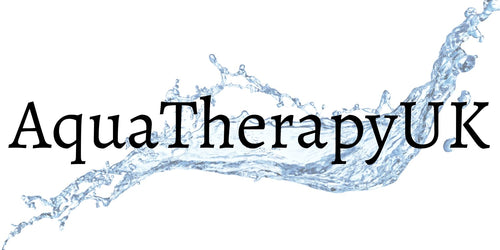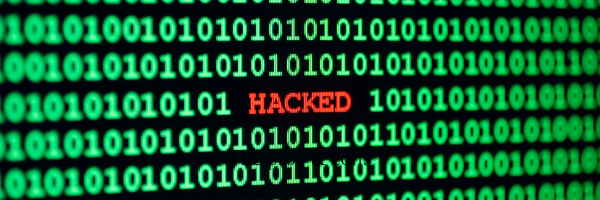The Rise of Biohacking: A Personal Journey to Optimizing Your Health
Introduction
Imagine living as the principal scientist in your body's laboratory rather than only a passive participant in your health journey. Greetings from the exciting world of biohacking! Biohacking used to be a strange pastime for IT geeks working in underground labs and garages in Silicon Valley. It has now developed into a wellness movement available to almost everyone who wishes to improve their performance and overall health. We now have more influence over our health than ever outside of traditional doctor's offices thanks to the proliferation of wearable technology, reasonably priced at-home testing kits, and publicly accessible biotechnology. This transformation is all about the radical notion that each of us can actively experiment with and optimize our biology; it goes beyond shiny new digital toys.
The worldwide biohacking market is projected to reach a staggering $24.81 billion in 2024 and increase at an astounding 18.95% yearly rate until 2030. The figures speak for themselves. A 2023 Global Wellness Institute poll found that 73% of respondents were more engaged in monitoring and enhancing their health metrics since 2020, particularly emphasizing strengthening immune function and developing stress resilience. The COVID-19 pandemic only served to stoke this fire. The accessibility of biohacking is what makes it so alluring. At the same time, experienced biohackers may opt for intricate genetic alterations or implant technology beneath their skin; novices can begin with straightforward, scientifically supported lifestyle changes that may have minimal costs but have the potential to yield significant outcomes. Because of this democratization, biohacking has evolved from something that only self-described "biohackers" practised to a movement now supported by wellness advocates, productivity gurus, fitness enthusiasts, and health-conscious people from all walks of life. In this blog, we'll examine the science underlying biohacking, its moral dilemmas, and valuable strategies for novices to tinker with this interesting area of personal health optimization.
What Is Biohacking?
"biohacking" refers to a broad spectrum of techniques used to improve human performance, health, and wellbeing by calculated manipulations. These can range from something as simple as altering your food to something as complicated as putting electronic gadgets inside your body. Fundamentally, biohacking is experimenting with yourself and using information to make better decisions regarding your health. "The conscious application of information, technology, and measurement to create an individualized approach to optimizing the physiological, cognitive, and psychological aspects of human function" is how Dr Jeffrey Bland, who is frequently referred to as the "father of functional medicine," defines biohacking [1]. This term emphasizes how contemporary biohacking mainly depends on quantifiable information rather than merely your emotions.
Categories of Biohacking
Biohacking spans everything from everyday habits to cutting-edge biological modifications. While there's often overlap between approaches, most practices fall into these main categories:
1. Nutrigenomics
Nutrigenomics examines how diet affects gene expression, delving into the intriguing dance between genes and food. It all comes down to tailoring your diet to your genetic profile to maximize health, lower disease risk, and improve physical performance. For instance, people with a particular MTHFR gene variation may digest folate less well, which could impact heart and brain health. A nutrigenomic strategy would tailor their folate consumption to meet their requirements.
Friendly warning: Although nutrigenomics has excellent potential, much of this discipline is still in its infancy. Although the National Institutes of Health (NIH) acknowledges its potential, they advise cautiously interpreting the results and consulting medical professionals.
What science says: According to a ground-breaking study by Weizmann Institute of Science researchers published in Cell in 2022, participants' blood sugar responses to similar meals varied significantly, proving that diet should be tailored to each individual rather than being a one-size-fits-all approach [2].
2. DIY Biology
DIY Biology is a grassroots movement in which everyday citizens and independent researchers experiment with biology outside traditional laboratories—often in community labs or even at home. This aspect of biohacking focuses on making biotechnology more accessible to everyone. While it raises eyebrows in some circles, DIY bio has contributed to remarkable innovations. Activities might include experimenting with gene editing using CRISPR kits, brewing custom probiotics, or developing open-source medical devices.
Friendly warning: The FDA and public health experts caution that some unregulated DIY bio experiments, especially gene editing at home, pose serious health and ethical risks.
What science says: The paper provides a comprehensive overview of the DIY biology movement, discussing its emergence, practices, ethical considerations, and potential impact on open science. The authors examine the promises and challenges of citizen-driven biotechnology initiatives outside traditional institutional settings [3].
3. Grinder Biohacking
Grinder biohackers (or body hackers) physically enhance their bodies with technology to expand sensory perception or physical capabilities. This approach often connects with transhumanism—the concept of transcending human limitations through technology. Popular implants include RFID chips for contactless security access, magnets that sense electromagnetic fields, or subdermal LED devices that glow beneath the skin.
Friendly warning: Many procedures happen outside clinical settings and can lead to infections or other complications. There are ongoing ethical debates around body autonomy and human enhancement.
What science says: Brian Hanley is an American microbiologist who became known for being one of the first biohackers to engineer their DNA using gene therapy for human enhancement and life extension [4].
4. Quantified Self Movement
The Quantified Self-movement involves tracking your data – sleep patterns, diet, mood changes, exercise performance – using wearable tech and apps to spot patterns and optimize well-being. Devices like Fitbit, Oura Ring, and continuous glucose monitors (CGMs) enable you to make data-driven health decisions based on your body's responses.
Friendly warning: Excessive self-tracking can sometimes lead to anxiety or obsessive behaviours. Experts recommend focusing on actionable, meaningful metrics rather than collecting data for its own sake.
What science says: The researchers conducted a systematic literature review of 67 empirical studies to assess how self-tracking influences health and wellbeing. The findings highlight that self-tracking can increase health awareness, improve health behaviours, and enhance patient engagement [5].
5. Neurohacking
Neurohacking aims to enhance brain function, mood, and mental performance through techniques like nootropics (cognitive enhancers), brainwave entrainment, meditation apps, and brain-machine interfaces. Popular nootropic supplements include L-theanine or modafinil, which can improve focus and memory.
Friendly warning: While some nootropics have evidence-backed benefits, others remain unproven or potentially unsafe without proper medical guidance.
What science says: The article reviews various methods to boost cognitive functions, including nootropics, brain stimulation, and behavioural techniques. It analyzes the scientific evidence behind these strategies, their mechanisms of action, and potential benefits. The authors also address ethical concerns about safety, fairness, and long-term societal impacts of enhancing healthy brains [6].
6. Lifestyle Biohacking
This is the most accessible and widely practiced form of biohacking making minor, science-backed lifestyle adjustments to sleep, exercise, nutrition, and stress management for better health and longevity. Popular approaches include intermittent fasting, cold exposure therapy (like ice baths), wearing blue-light-blocking glasses in the evening, and strategic supplementation.
Friendly warning: Not every trending hack works for everyone. It's best to rely on well-researched, peer-reviewed evidence when making changes.
What science says: A systematic review and meta-analysis examine how various lifestyle changes can influence mental health outcomes. The study analysed multiple interventions, including physical activity, dietary modifications, and sleep hygiene practices, assessing their effectiveness in reducing symptoms of depression, anxiety, and stress [7].
Popular Beginner-Friendly Biohacks
The good news? Biohacking doesn't have to involve implants or gene editing. Many of the most effective hacks are simple lifestyle adjustments anyone can start today. Here's a breakdown of popular, accessible bio hacks for beginners:
1. Sleep Optimization
Why it matters: Sleep is the foundation of physical and mental health. Poor sleep affects everything from memory and immunity to mood and metabolism – it's arguably the most powerful biohack of all.
Beginner tips:
• Stick to a consistent sleep and wake schedule, even on weekends
• Avoid screens and blue light at least an hour before bedtime
• Keep your bedroom calm, dark, and quiet – like a sleep cave!
• Try using sleep-tracking devices (like an Oura Ring or Whoop) to understand your sleep patterns.
Evidence: Research consistently shows that sleep deprivation significantly impairs cognitive performance and increases disease risk across the board [8].
2. Intermittent Fasting
Why it matters: Intermittent fasting (IF) involves alternating periods of eating and fasting, which promotes fat burning, improves insulin sensitivity, and triggers cellular repair mechanisms.
Popular beginner approaches:
• 16:8 method: Fast for 16 hours, eat during an 8-hour window
• 12:12 method: The easiest starting point – simply fast for 12 hours daily (e.g., 8 pm to 8 am)
Evidence: Studies published in the New England Journal of Medicine (2019) show that IF can improve metabolic health, reduce inflammation, and extend lifespan [9].
3. Cold Exposure and Heat Therapy
Why it matters: Exposing your body to controlled stressors like cold and heat builds resilience, improves circulation, and enhances mental clarity through hormetic stress.
Beginner practices:
• End your shower with 30-60 seconds of cold water, gradually building tolerance
• Try brief ice baths (1-3 minutes) for more advanced cold exposure
• Enjoy sauna sessions (15-20 minutes, 2-3 times weekly) if you have access
Evidence: Cold exposure activates brown fat (the good kind) and boosts mood through norepinephrine release. Numerous studies have linked regular sauna use to reduced cardiovascular risk and mortality [10].
4. Blue Light Management
Why it matters: Excessive blue light exposure, especially after sunset, disrupts your circadian rhythms and melatonin production, dramatically affecting sleep quality and hormone balance.
Beginner strategies:
• Wear blue light-blocking glasses in the evening hours
• Enable night mode or dark filters on your phones, tablets and computers
• Aim to avoid screens altogether 60-90 minutes before bedtime
Evidence: Research confirms that blue light suppresses melatonin production and delays sleep onset, making it harder to fall asleep and reducing sleep quality [11].
5. Basic Supplementation
Why it matters: When used appropriately, targeted supplements can help fill nutrient gaps, support cognitive function, and boost energy levels.
Popular beginner supplements:
• Magnesium: Supports sleep quality, stress management, and muscle function (try magnesium glycinate before bed)
• Vitamin D3: Essential for immune function and mood regulation, especially during low-sunlight seasons
• Omega-3s (EPA/DHA): Supports brain health, heart function, and reduces inflammation
• L-theanine: Promotes calm focus, especially effective when paired with caffeine
Evidence: Multiple clinical studies support the role of these fundamental supplements in maintaining health and enhancing performance when used appropriately[12].
Tools and Technologies in Biohacking
Modern biohacking relies heavily on accessible technology to monitor and optimize health. Here's a look at the essential tools available to today's biohackers:
1. Wearable Devices
What they do: Track important biometrics like heart rate, sleep quality, physical activity, HRV (heart rate variability), and body temperature.
Popular examples:
• Oura Ring: Offers comprehensive sleep analysis, readiness scores, and activity tracking in a sleek ring form
• Whoop Strap: Provides detailed recovery and strain insights, especially valuable for athletes and fitness enthusiasts
• Fitbit/Apple Watch: Delivers general activity monitoring, heart rate tracking, and basic sleep data
Why it matters: Wearables give you real-time data about your body, allowing you to adjust your habits for better health outcomes.
2. Genetic Testing Kits
What they do: Analyze your DNA to reveal predispositions related to nutrition, fitness, disease risk, and more.
Popular examples:
• 23andMe: Offers health and ancestry insights
• AncestryDNA: Focuses on heritage with some health information
• Genopalate: Specializes in nutrition recommendations based on genetic markers
Why it matters: Understanding your genetic tendencies allows for truly personalized diet, exercise, and lifestyle strategies tailored to your unique genetic makeup.
3. Smart Health Trackers
What they do: Provide continuous or on-demand monitoring of specific health metrics beyond what standard wearables track.
Popular examples:
• Continuous Glucose Monitors (CGMs) like Levels Health or Freestyle Libre reveal how your blood sugar responds to different foods and activities
• Smart scales with body composition analysis give insights into muscle, fat, and water percentages
• Smart air quality monitors help optimize your home environment
Why it matters: Continuous specialized tracking reveals patterns that might otherwise remain invisible, helping you fine-tune interventions like diet timing, exercise selection, and sleep environment.
4. Nootropic Supplements
What they do: Enhance cognitive function, memory formation, mental focus, and stress resilience.
Popular beginner nootropics:
• L-theanine + caffeine: The classic combination for smooth energy and focused attention without jitters
• Rhodiola Rosea: An adaptogenic herb that helps the body manage stress more effectively
• Creatine: Known for muscle benefits but also offers proven cognitive enhancement
• Alpha-GPC: Supports memory formation and learning capacity
Why it matters: While some nootropics have solid clinical evidence behind them, others need more research. It's always best to choose evidence-supported options and start with mild, safe compounds.
Ethical Considerations and Risks
As biohacking moves from fringe science into the mainstream health and wellness world, it raises important ethical and safety questions that newcomers and experienced practitioners should consider carefully.
1. Health and Safety Concerns
While many beginner-friendly biohacks (like sleep optimization and intermittent fasting) are well-researched and carry minimal risk, others—especially those involving DIY biology and body implants—come with significant health concerns.
Examples of potential risks:
• Infection and complications from unregulated implant procedures
• Unverified supplements that might interact badly with medications or worsen existing health conditions
• Unsupervised gene editing or hormone manipulation can have unpredictable and irreversible effects on your body
2. Regulation and Oversight Issues
The explosive growth of consumer biohacking has outpaced government regulations in many areas. Most wearable devices, supplements, and biohacking procedures fall outside the strict jurisdiction of medical regulators like the FDA – unless they specifically claim to treat or cure diseases.
Key issues:
• DIY gene editing kits and unlicensed implant surgeries remain largely unregulated in many countries
• The supplement market, especially for nootropics and performance enhancers, lacks proper standardization
• Ethical oversight for community bio-labs and personal experimentation is minimal, creating potential risks for both individuals and public health.
3. Privacy and Data Security Challenges
With the proliferation of wearable devices, genetic testing kits, and biometric data platforms, health data has become valuable and vulnerable. Risks include:
• Data breaches exposing sensitive information from wearable tech companies or DNA testing services
• Unclear data ownership policies, where users unknowingly grant companies rights to sell or share their biometric or genetic information
• Insurance or employment discrimination based on disclosed genetic predispositions or health data
The Future of Biohacking
Biohacking isn't just a fad. As wearable technology, AI-driven health insights, and biotechnology advance, the field is evolving at lightning speed.
Emerging Trends and Innovations
- Continuous glucose monitoring (CGM) for non-diabetics is gaining popularity as a tool to optimize energy levels, mood, and metabolic health by revealing how your body responds to different foods and activities.
- AI-powered health coaching apps deliver increasingly personalized lifestyle recommendations based on real-time biometric data from multiple sources.
- Wearable neurostimulation devices for improving focus, managing stress, and enhancing sleep quality are becoming more sophisticated and accessible.
- Gene therapies and anti-ageing interventions are moving from theoretical research toward practical clinical applications. Cutting-edge longevity biotech companies like Altos Labs and BioViva are actively researching gene therapies that could extend healthy human life.
The Road Ahead for Personal Optimization
In the coming decade, expect to see:
• Greater integration of AI with biohacking tools, offering real-time feedback and predictive health models customized to your unique biology
• Truly personalized nutrition and supplementation plans based on your specific genetic profile, gut microbiome composition, and metabolic responses
• There are deeper ethical debates over human enhancement, especially as cognitive enhancers and biological implants become more sophisticated and widely available.
Conclusion
Biohacking has rapidly evolved from an underground movement of experimental technologists to a mainstream approach to personal health and performance optimization. While the term might conjure images of gene editing and microchip implants, the reality is that many of the most impactful hacks are simple, evidence-based lifestyle adjustments like improving sleep quality, fine-tuning nutrition, and better managing stress. For beginners, the key is to start small, focus on measurable outcomes that matter to you personally and rely on well-supported practices backed by credible research. As wearable devices, genetic testing, and personalized health technologies become increasingly accessible, we have unprecedented tools at our fingertips to take control of our well-being.
However, with this empowerment comes responsibility – to approach biohacking thoughtfully, considering ethical implications, personal safety, and data privacy. The future of biohacking holds exciting possibilities, from breakthrough longevity therapies to AI-driven health insights. Still, it's crucial to remember that proper optimization begins with foundational habits and informed decision-making. Done right, biohacking isn't about chasing the latest trends – it's about building a brighter, healthier, and more resilient life, one small experiment at a time.
------------
References
1. Bland, J. S. (2014). The disease delusion: Conquering the causes of chronic illness for a healthier, longer, and happier life. Harper Collins.
2. Zeevi, D., Korem, T., Zmora, N., Israeli, D., Rothschild, D., Weinberger, A., ... & Segal, E. (2015). Personalized nutrition by prediction of glycemic responses. Cell, 163(5), 1079-1094.
3. Landrain, T., Meyer, M., Perez, A. M., & Sussan, R. (2013). Do-it-yourself biology: Challenges and promises for an open science and technology movement. Systems and Synthetic Biology, 7(3), 115-126.
4. Regalado, Antonio. "One man’s quest to hack his own genes" (in en). MIT Technology Review. https://www.technologyreview.com/s/603217/one-mans-quest-to-hack-his-own-genes/. Retrieved 23 April 2017.
5. Feng, S., Mäntymäki, M., Dhir, A., & Salmela, H. (2021). How self-tracking and the quantified self promote health and wellbeing: systematic review. Journal of Medical Internet Research, 23(9), e25171.
6. Dresler M, Sandberg A, Bublitz C, Ohla K, Trenado C, Mroczko-Wąsowicz A, Kühn S, Repantis D. Hacking the Brain: Dimensions of Cognitive Enhancement. ACS Chem Neurosci. 2019 Mar 20;10(3):1137-1148. doi: 10.1021/acschemneuro.8b00571. Epub 2019 Jan 2. PMID: 30550256; PMCID: PMC6429408.
7. Amiri S, Mahmood N, Javaid SF, Khan MA. The Effect of Lifestyle Interventions on Anxiety, Depression and Stress: A Systematic Review and Meta-Analysis of Randomized Clinical Trials. Healthcare. 2024; 12(22):2263. https://doi.org/10.3390/healthcare12222263
8. https://www.sleepfoundation.org/how-sleep-works/why-do-we-need-sleep
9. https://www.nejm.org/doi/full/10.1056/NEJMra1905136
10. Laukkanen T, Khan H, Zaccardi F, Laukkanen JA. Association Between Sauna Bathing and Fatal Cardiovascular and All-Cause Mortality Events. JAMA Intern Med. 2015;175(4):542–548. doi:10.1001/jamainternmed.2014.8187
11. https://www.health.harvard.edu/staying-healthy/blue-light-has-a-dark-side
12. https://ods.od.nih.gov/







